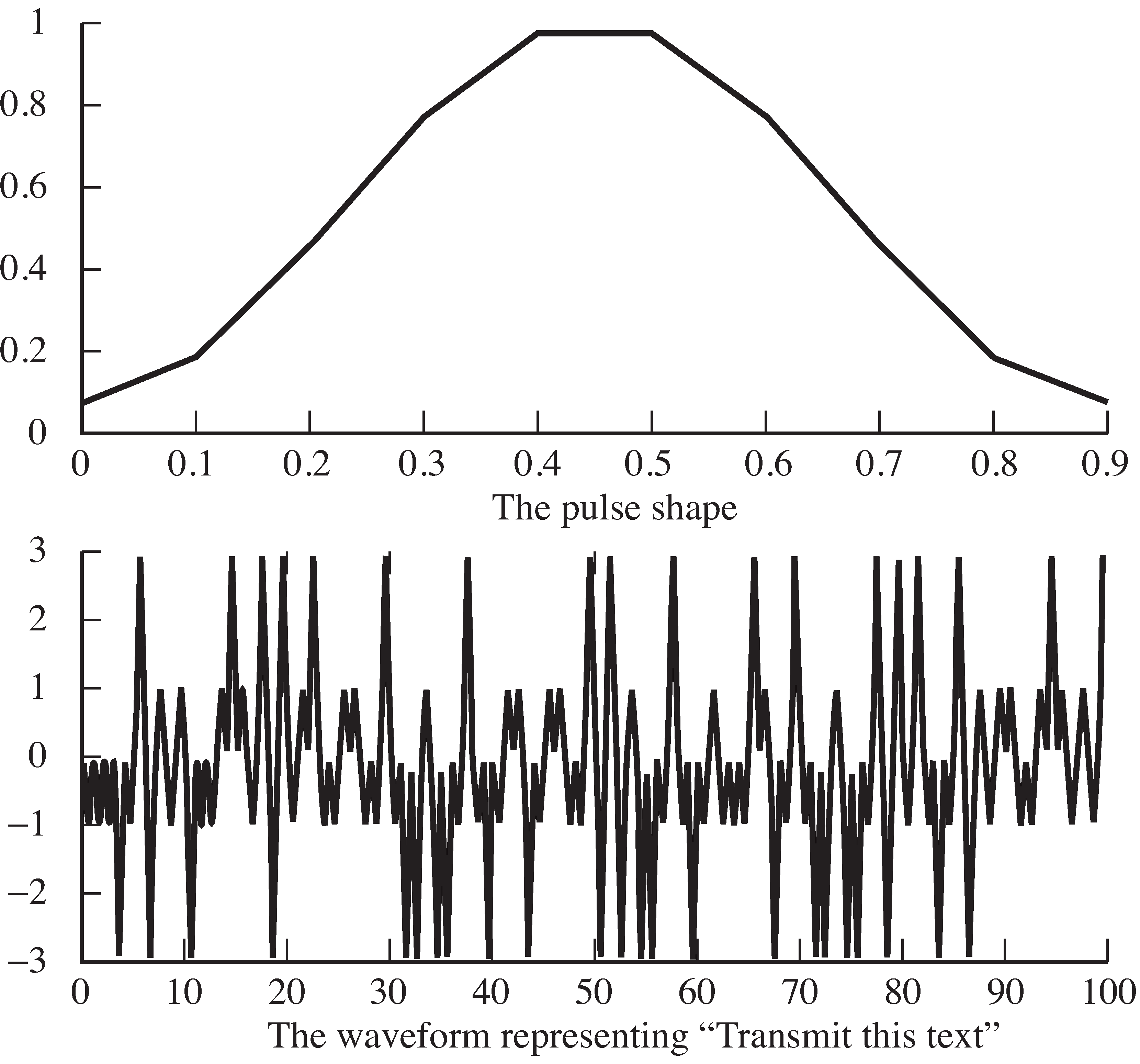| << Chapter < Page | Chapter >> Page > |
The program
pulseshape.m represents the “continuous-time” or
analog signal by oversampling both the data sequenceand the pulse shape by a factor of
M . This
technique was discussed in
[link] ,
where an “analog” sine wave
sine100hzsamp.m was
represented digitally at two sampling intervals, a slow digitalinterval
and a faster rate (shorter interval)
representing the underlying analog signal. The pulse shaping itself
is carried out by the
filter command which convolves the
pulse shape with the data sequence.
str='Transmit this text string'; % message to be transmitted
m=letters2pam(str); N=length(m); % 4-level signal of length NM=10; mup=zeros(1,N*M); mup(1:M:N*M)=m; % oversample by M
ps=hamming(M); % blip pulse of width Mx=filter(ps,1,mup); % convolve pulse shape with data
pulseshape.m applying a pulse shape to a text string
(download file)

Assume the sampling period is
, and then plot the spectrum of the output
x .
What is the bandwidth of this signal?
Again with
, plot the spectrum of the output
x when the pulse shape is changed to a rectangular pulse.
(Change the definition of
ps in the next to last line
of
pulseshape.m .) What is the bandwidth of this signal?
Can you think of a pulse shape that will have a narrower
bandwidth than either of the above but that will stillbe time limited by
? Implement it by changing
the definition of
ps , and check to see if you are correct.
Thus the raw message, the samples, are prepared for transmission by
The receiver must undo these two operations; it must examine the received signal and recover the elementsof the alphabet, and then decode these to reconstruct the message. Both of these tasks are made easier using correlation, which isdiscussed in the next section. The actual decoding processes used in the receiverare then discussed in "Receive Filtering: From Signals to Symbols" .
Suppose there are two signals or sequences. Are they similar, or are they different?If one is just shifted in time relative to the other, how can the time shift be determined?The approach called correlation shifts one of the sequences in time, and calculates how well they match (by multiplying pointby point and summing) at each shift. When the sum is small, they are not much alike;when the sum is large, many terms are similar. Thus, correlation is a simple form of pattern matching,which is useful in communication systems for aligning signals in time. This can be applied at the level ofsymbols when it is necessary to find appropriate sampling times, and it can be applied at the “frame” level when it is necessaryto find the start of a message (for instance, the beginning of each frame of a television signal). This section discussesvarious techniques of cross-correlation and autocorrelation, which can be viewed in either the time domain or thefrequency domain.

Notification Switch
Would you like to follow the 'Software receiver design' conversation and receive update notifications?